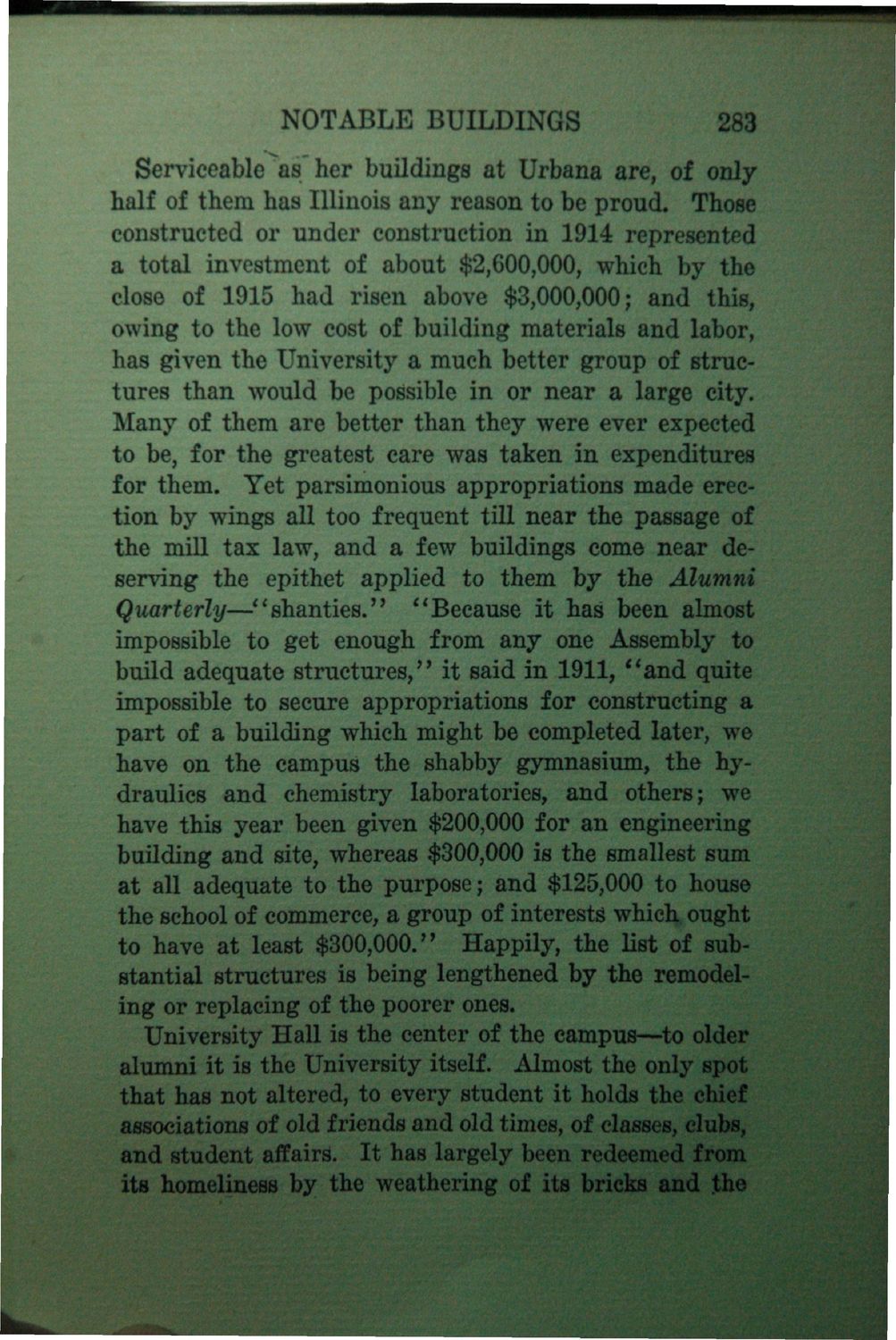| |
| |
Caption: Book - History of the University (Nevins)
This is a reduced-resolution page image for fast online browsing.

EXTRACTED TEXT FROM PAGE:
NOTABLE BUILDINGS 283 Serviceable "as her buildings at Urbana are, of only half of them has Illinois any reason to be proud Those constructed or under construction in 1914 represented a total investment of about $2,600,000, which by the close of 1915 had risen above $3,000,000; and this, owing to the low cost of building materials and labor, has given the University a much better group of structures than would be possible in or near a large city. Many of them are better than they were ever expected to be, for the greatest care was taken in expenditures for them. Yet parsimonious appropriations made erection by wings all too frequent till near the passage of the mill tax law, and a few buildings come near deserving the epithet applied to them by the Alumni Quarterly—"shanties." "Because it has been almost impossible to get enough from any one Assembly to build adequate structures," it said in 1911, "and quite impossible to secure appropriations for constructing a part of a building which might be completed later, we have on the campus the shabby gymnasium, the hydraulics and chemistry laboratories, and others; we have this year been given $200,000 for an engineering building and site, whereas $300,000 is the smallest sum at all adequate to the purpose; and $125,000 to house the school of commerce, a group of interests which, ought to have at least $300,000." Happily, the list of substantial structures is being lengthened by the remodeling or replacing of the poorer ones. University Hall is the center of the campus—to older alumni it is the University itself. Almost the only spot that has not altered, to every student it holds the ejpef associations of old friends and old times, of classes, c|§bs, and student affairs. It has largely been redeemed from its homeliness by the weathering of its bricks and j
| |